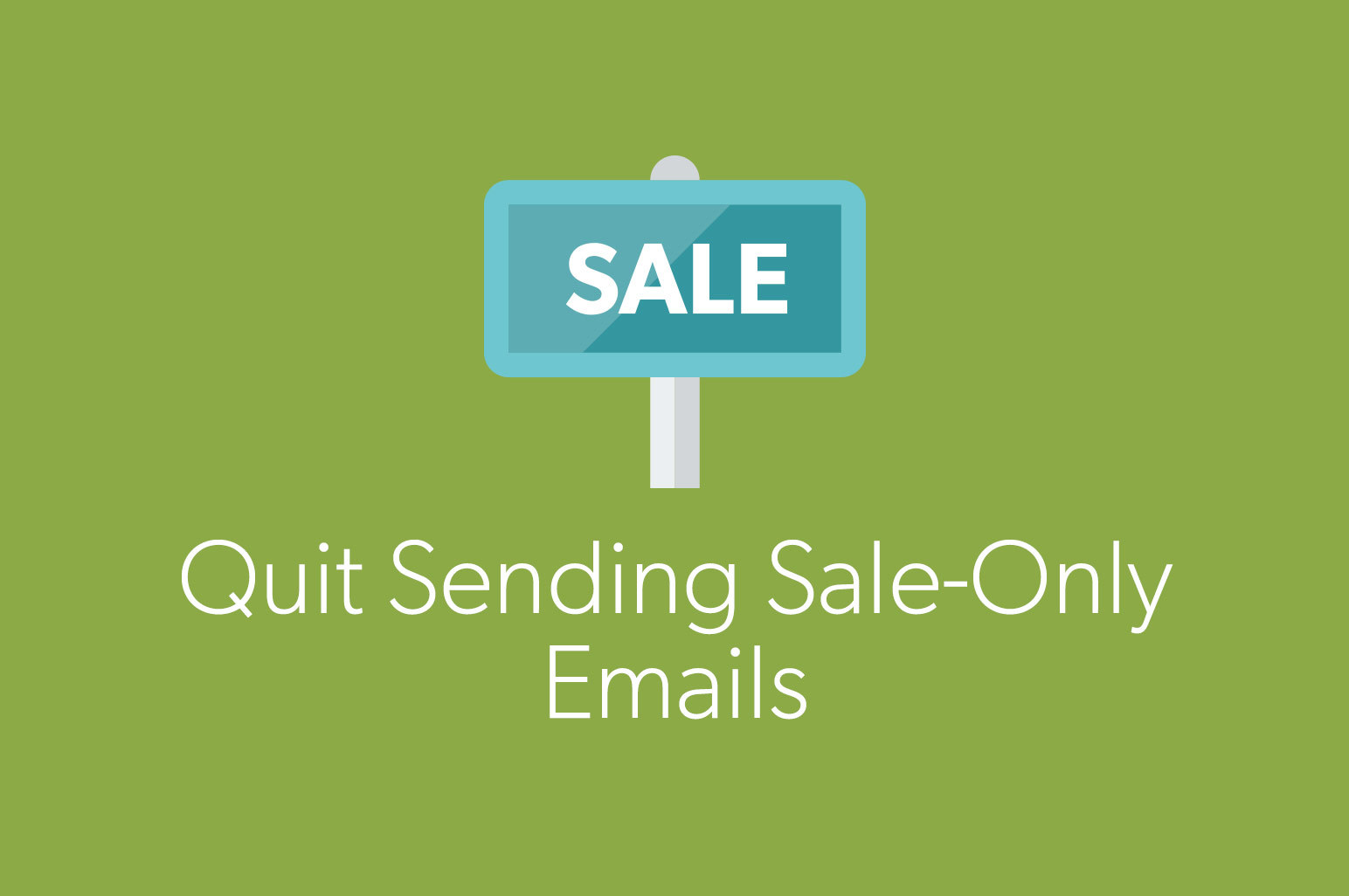We’re all guilty of emailing promotions without additional value. For many retailers it’s their entire strategy.
- Save 25% on All Clearance Items
- Take $10 off Your Order
- Buy One Shirt Get One Free!
But why not provide more value and improve your marketing efforts?
Promotions are what many subscribers to retail newsletters expect and it’s what many offer. But how are your products beneficial to your customers? How do you compete with other retailers offering the same discounts for similar products?
Why Should Your Customers Buy From You?
Your products help solve a problem. Even if you’re selling a simple t-shirt or a hat.
In addition to your sale, talk about the benefits of your products. Make that deep discount even more valuable.
What materials is the shirt made of? Is it extra-thick so that your customer doesn’t have to layer another shirt underneath? Did you add new colors? New graphics? Does it come in an eco-friendly box?
Make sure your giving your customers a reason to buy your products in addition to your sale.
It’s not your sales that customers go crazy for, it’s what they can buy during your sale.
Building the Wrong Customer Expectations
Sending promotions in every email will cause your customers to develop the expectation that they’ll always receive a discount. They’ll wait for the email and then purchase instead of paying full price.
It’s a dangerous path to go down if you don’t always want to be in the business of sales and discounts.
Understand your brand and craft the right email strategy before you start sending discounts. This is a step businesses don’t take enough time to do.
Anytime you’re communicating directly with your customers they are building an impression of you and your business.
Don’t set the wrong expectations.
Example Email Campaign Promoting Product Benefits

Eddie Bauer email design
Eddie Bauer does a great job pairing a sale with product benefits. They also send emails featuring new, regular priced products in addition to their sale-focused emails.
A sale-only strategy may work for you, just make sure it’s what you want long-term if you continue down that path.
Tell your customers why they should buy. Cover the who, what, where and why in every email you send.





